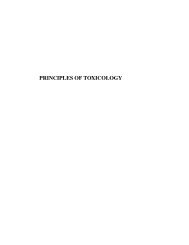Insect-pests - Biology East Borneo
Insect-pests - Biology East Borneo
Insect-pests - Biology East Borneo
You also want an ePaper? Increase the reach of your titles
YUMPU automatically turns print PDFs into web optimized ePapers that Google loves.
36 <strong>Insect</strong> Pests and Diseases of Major Plantation Species<br />
90% of 3-year-old trees (2.5 m tall) were infested<br />
but only 5% of trees 14 years old and 13 m tall.<br />
Older trees are not susceptible to attack. With the<br />
life cycle lasting between 1 and 2 months there are<br />
several overlapping generations and repeated attacks<br />
coincident with flushing. At present, there is no<br />
effective method to control this pest. It has been<br />
suggested that planting of trees repellent to the shoot<br />
borer moth along the plantation border or in a mixture<br />
will prevent the arrival of moths for egg laying. In<br />
preliminary trials, planting of Acacia mangium<br />
around a mahogany plantation prevented H. robusta<br />
infestation (Matsumoto et al. 1997), and<br />
interplanting neem, Azadirachta indica, with<br />
mahogany in uneven admixture reduced shoot borer<br />
attack (Suharti et al. 1995). These preliminary<br />
results are encouraging, but more critical, large-scale<br />
trials are necessary to examine the effectiveness and<br />
feasibility of this approach.<br />
The scolytid beetle, Xylosandrus compactus (syn.<br />
Xyleborus morstatti) (Coleoptera, Scolytidae) lays<br />
eggs in galleries in the stems of seedlings in the<br />
nursery leading to their collapse (Suratmo 1982;<br />
Natawiria 1990; Suharti and Sitepu 1997; Sitepu and<br />
Suharti 1998). It also infests living twigs and branches<br />
of older trees (Mayhew and Newton 1998). This<br />
species also damages mahogany seedlings in Sri<br />
Lanka and Thailand. Minor <strong>pests</strong> observed in<br />
experimental plantings include the leaf-feeding<br />
caterpillar, Attacus atlas (Lepidoptera, Saturnidae) and<br />
the leaf-cutter bee, Megachile sp. (Hymenoptera,<br />
Megachilidae) (Matsumoto 1994).<br />
Diseases<br />
The only disease noted in S. macrophylla is bark rot,<br />
which occurs at the base of the trunk. The lesion<br />
appears in the middle of the rainy season, spreads<br />
rapidly from bottom upwards and often kills the trees<br />
by the end of the season. The lesion always appears<br />
on the stem surface facing the water flow along the<br />
slope and it is assumed that the pathogen arrives<br />
through water and enters through wounds. The<br />
causative organism remains unidentified. About 40%<br />
of trees have been affected in some patches of<br />
S. macrophylla stands in Purwodadi forest district,<br />
Central Java (Sumardi and Widyastuti unpublished).<br />
There are no other major diseases, although<br />
occurrence of the root rot pathogens, Armillaria<br />
mellea and Phellinus noxius has been reported<br />
(Mayhew and Newton 1998).<br />
Threat assessment<br />
The shoot borer is the major threat to cultivation of<br />
mahogany worldwide, with the related species,<br />
Hypsipyla grandella replacing H. robusta, in the Latin<br />
American tropics. Although older trees are not<br />
attacked, many plantation programmes have been<br />
abandoned due to damage during the establishment<br />
stage. Development of practical control methods<br />
using strategies such as chemical application, insect<br />
parasitoids and shade regulation have been<br />
unsuccessful. The use of deterrent trees is being<br />
tested. Recently, the Australian Centre for<br />
International Agricultural Research has supported<br />
international cooperation to find a solution to this<br />
vexing problem.<br />
The shoot borer does not occur in Fiji, but<br />
ambrosia beetle and termites have taken a heavy<br />
toll of S. macrophylla plantations there. Three species,<br />
Neotermes papua, N. samoanus and an unidentified<br />
Neotermes sp. infest living trees aged 2 years and older<br />
(Kamath et al. 1996). They hollow out the trees from<br />
within the trunk and older infestations become<br />
manifested as gentle to heavy swellings on the trunk.<br />
On an average, 7% of trees in plantations are infested.<br />
This attack is similar to that of Neotermes sp. on teak<br />
in Indonesia. Vigilance is necessary to detect signs of<br />
termite infestation of mahogany in Indonesia.<br />
Two endemic species of ambrosia beetles<br />
(Crossotarsus externe-dentatus and Platypus<br />
gerstaeckeri) also infest trees older than 6-8 years in<br />
Fiji. Such attacks appear to be related to poor tree<br />
health. Monitoring the possible build up of Xylosandrus<br />
compactus, which infests twigs of older mahogany<br />
trees in Indonesia, in trees of poor health is needed.<br />
The only serious disease is the unidentified pathogen<br />
spread through flowing water which results in the<br />
death of trees. Research is needed to determine the<br />
etiology of this disease. In this context, it is interesting<br />
to note that the fungus, Phytophthora cinnamomi,<br />
causing a serious root disease in Eucalyptus marginata<br />
and other trees in Australia, can disperse through<br />
flowing subsurface water in lateritic soil on hill slopes<br />
(Kinal et al. 1993).
















